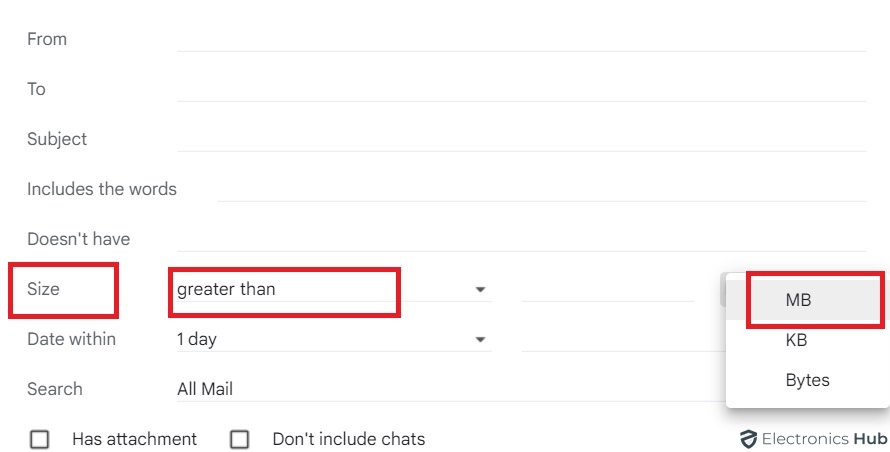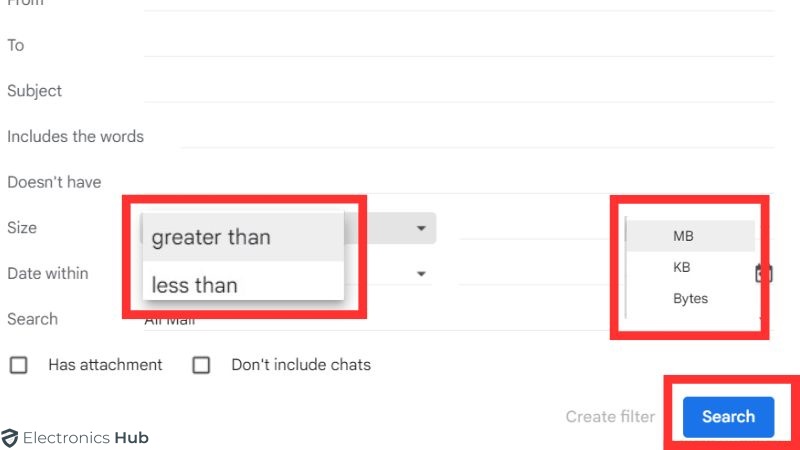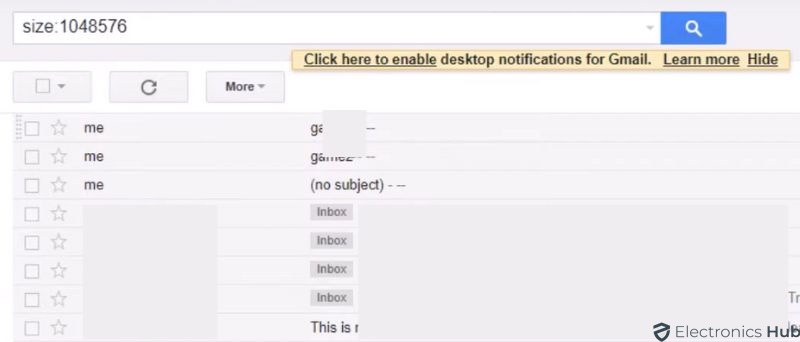Did you know that the average office worker receives over 120 emails per day? That’s a staggering amount of information constantly flowing through your inbox. While Gmail offers a generous 15GB of free storage, it can surprisingly fill up fast, especially with emails containing large attachments.
One can sort their Gmail by size to reclaim control of their inbox in just a few steps. This can significantly improve your email workflow and not just declutter. By identifying and managing bulky emails, you can:
- Free Up Valuable Storage Space: Large attachments like videos or presentations can eat into your storage quota quickly. Sorting by size helps you pinpoint these space hogs and decide whether to keep, delete, or move them to free up precious storage.
- Boost Efficiency: A cluttered inbox with hidden giants can be a nightmare to navigate. When you sort by size, this helps bring your biggest emails to the forefront. Meaning, this allows you to prioritize them, or remove them with ease to streamline your email management process.
Now, are you ready to take charge of your inbox and reclaim control of your storage? Let’s explore the methods for sorting Gmail by size!
Outline
ToggleHow To Sort Gmail By Size?
While Gmail doesn’t offer a direct sorting function by size, you can effectively achieve similar results using the search bar’s advanced options. Here’s a detailed guide with easy to follow steps:
1. Log in to Gmail and go to your inbox.
2. Click on the search bar at the top.
3. Look for the small arrow or “Show search options” next to it and click it.
4. Find the “Size” section in the search filters that appear.
5. Set your size preferences
- To search for emails of a specific size, type “size:X” (replace X with the size in bytes, like “size:5000000” for 5MB).
- For a size range, use “larger_than:” or “smaller_than:” followed by the size in bytes (e.g., “larger_than:10000000” for over 10MB).
6. Click the blue “Search” button to execute the search.
7. Once Gmail shows the emails matching your size settings, you can take actions like archiving, deleting, labeling, or moving them.
8. Use checkboxes or the “Select all” option to manage multiple emails at once.
Things To Know
- To get more specific results, use the size search along with other filters in the search bar. For example, you can search for emails larger than 10MB from a specific sender by combining the size criteria with the “from:” filter.
- Although you can’t directly sort by size in the search results, you can still organize the filtered emails. Once you’ve done the size search, use the sorting options at the top of the inbox to arrange the emails by date, sender, or importance.
How To Sort Gmail By Size With Limits?
1. Go to the Gmail search bar.
2. Click the down arrow to see “Show search options.”
3. Find the “Size” section.
4. Choose from “Larger than,” “Smaller than,” or “Equal to” depending on your needs.
5. Enter the size limit in KB, MB, or GB.
6. Click the search icon.
7. You’ll see emails that match your size criteria. You can refine results with sender, recipient, or keywords.
Things To Know
- After searching by size, you can use the “Sort by” option (located above the search results) to arrange them by date (newest or oldest) for better organization.
- While this method helps identify large emails, it doesn’t inherently sort your entire inbox by size.
- Consider using the “Large Mail” filter available above the search bar. This pre-set search shows emails exceeding a specific size threshold (though you can’t define the exact size).
How To Search Gmail for Large Files?
1. Log in to Gmail and access your inbox.
2. Locate the search bar at the top of your inbox. This is where you’ll enter your search query.
3. Use the following format in the search bar:
- Size:[file size]
4. Replace [file size] with the actual size you’re looking for. Here’s the key:
- Specify the size in bytes: If you want to find emails larger than 5 megabytes (MB), enter size:5000000 (1 MB is equal to 1,048,576 bytes).
- Use “M” for Megabytes or “GB” for Gigabytes for easier reading: For example, size:5M or size:10GB.
5. Hit Enter to initiate the search.
6. Gmail will display all emails exceeding the specified size limit.
Things To D0
- Refine Your Search: You can combine the size search with other criteria to narrow down results. Let’s say you want to find emails with large attachments from a specific sender named “John.” Use this query: size:10M from:John has:attachment
- Search for a Size Range: Instead of a specific size, you can search for emails within a size range.
Use the following format:
- larger_than:XMB smaller_than:YMB
Replace “X” and “Y” with the desired minimum and maximum sizes in Megabytes (MB).
Gmail’s Advanced Search Capabilities
Beyond basic keyword searches, Gmail offers a robust set of search operators to precisely locate emails. Here’s an exploration of some valuable yet underutilized functions:
1. Granular Date Search
- Older_than: Locate emails predating a specific date. Example: older_than:1y retrieves emails older than one year.
- This offers more flexibility than older:YYYY/MM/DD as you can search by relative time periods (months, weeks).
2. Refined Message Filtering
- from:name: Narrow down results to emails received from a particular sender (replace “name” with the actual email address).
- to:name: Similarly, search for emails sent to a specific recipient.
- has:attachment: Identify emails containing attachments of any type.
- has:document (or specific file type): Search for emails with attachments of a designated format (e.g., has:pdf for PDFs or has:docx for Word documents).
3. Label and Importance Markers
- label:work: Search within emails tagged with the “work” label (or any other label you’ve created).
- is:starred: Locate all emails marked with a star for easy retrieval.
4. Combining Operators for Powerful Searches
The true strength lies in combining these operators. For instance: from:client has:attachment after:2024/04/01 retrieves emails with attachments received from clients after April 1st, 2024.
Frequently Asked Questions
Once you’ve filtered by size, you can take various actions on those emails. You can delete them to free up storage, archive them, move them to a specific label, or simply browse through them.
Unfortunately, Gmail doesn’t display the size of each email directly in the inbox view. However, you can hover over the email and a tooltip will appear, sometimes mentioning the size if it’s a particularly large message.
Cloud storage: Consider uploading large attachments to cloud storage services like Google Drive and then linking to them in your email. This saves space in your Gmail inbox.
Compress attachments: If file size allows, compress attachments (e.g., zip files) before sending or receiving them.
Set storage limits: If you frequently deal with large emails, consider setting storage notifications in Gmail to be alerted when you’re approaching storage limits.
Before deleting, ensure the emails and attachments are no longer needed. Double-check for important information, especially if they contain critical documents or legal records.
Gmail offers a trash folder where deleted emails reside for a set period (usually 30 days). You can recover emails from the trash before they are permanently deleted.
Conclusion
Although Gmail doesn’t have a feature to sort emails by size, you can still use the search function effectively. By following the steps we’ve discussed, you can find and handle emails based on their size.
We hope this article helped you learn how to sort your Gmail by size. Did you find this information helpful? If yes, do share your thoughts in the comments!





